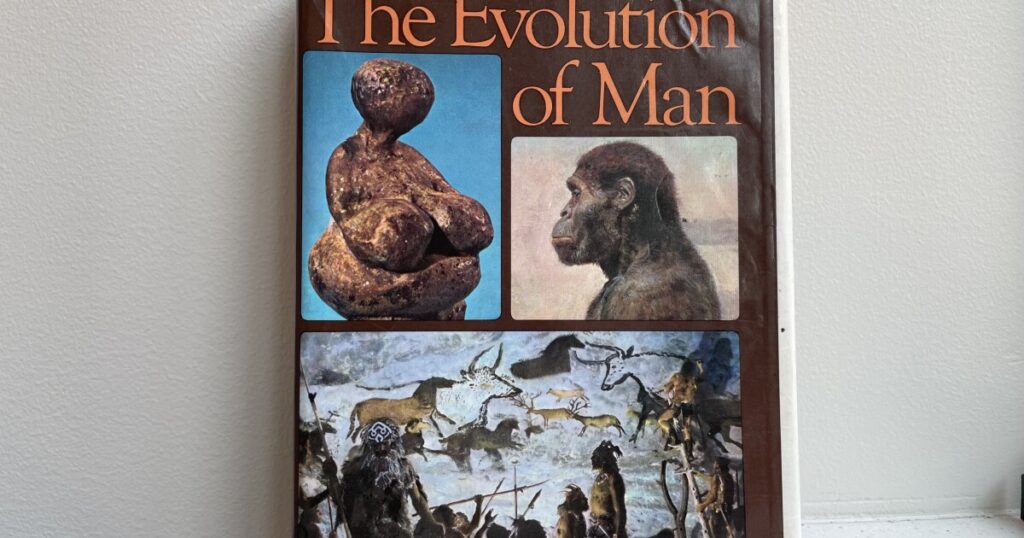One of my earliest childhood memories is being kicked out of Sunday school.
I remember my suburban church basement classroom, with its beige cinderblock walls and Bible-themed coloring books, and the discomfort I felt as a five-year-old.
As my teacher was engrossed in a lesson about Adam and Eve, I asked, “What about evolution?”
I had heard of Charles Darwin and his theories, but they didn’t line up with my teacher’s story about humans being created from clay and a rib.
In that classroom, evolution, rather than a unified concept of biology, was considered heresy.
I never went back to Sunday school, but it sparked a lifelong interest in the 7-million-year-old mystery of how Homo sapiens became Earth’s dominant species.
The theory of evolution is a simple explanation of how organisms change over time and adapt to their environment through the process of natural selection, and it’s not really that controversial.
Embracing evolution allows us to ask fun questions about our most ancient ancestors: What did they look like? Why did they come down from the trees and start walking upright? Why did humans develop language, analytical abilities, family structures, weaknesses, and a sinful nature?
Nearly every aspect of human behavior can be examined through an evolutionary lens.
Let’s start with why we started walking on two legs.
One theory put forward by Professor Owen Lovejoy of Kent State University, who was part of the team that examined the famous Lucy fossil in the 1970s, is that it needed hands to carry things.
It’s called “provisioning theory.”
I like this theory because it includes committed couples as part of our evolutionary history, which I’m sure my Sunday School teacher would have loved.
Lovejoy argues that early humans needed both hands to carry food and infants, and that women were attracted to men who were good at both carrying loads and caring for families.
Lovejoy points out that, unlike chimpanzees, humans don’t have huge, intimidating incisors to intimidate rivals: Our teeth are small and non-threatening, so males pair-bonded and looked after each other, rather than competing for a “harem” of females.
Lovejoy and his colleagues believe that humans’ defining evolutionary feature is their ability to cooperate on a level not seen in any of their ape relatives.
Evolution took many twists and turns on the way to Homo sapiens.
Our early ancestor, Homo erectus, left Africa 2 million years ago and spread across much of Asia.
This cunning beast is perhaps the most successful human species, having conquered the world with nothing but his thick eyebrows and a stone axe.
He may also have possessed fire, a characteristic of humans.
Humanity then reached a nadir known as the “demographic bottleneck,” which was perhaps a defining moment in human evolution.
Sophisticated genetic analysis has shown that 900,000 years ago the entire human population dwindled to about 1,280 people of childbearing age.
So you and I and over 8 billion people alive today are essentially descendants of the average population of high school students scattered across Africa.
About 500,000 years ago, our closest relatives, the Neanderthals, left Africa and migrated to the icy plains of Europe and Central Asia.
Modern Homo sapiens then encountered these hardy ancient peoples, and for thousands of years they continued to circle each other in a drawn-out, life-threatening dance.
Today, all humans outside of Africa have some Neanderthal DNA left over from that brief interbreeding.
Recent research has shown that contrary to the image of Neanderthals as barbarians, they had complex emotional and mental lives.
Their downfall was that they were not as good at working together in groups as we were.
Although we are increasingly factional today, and war and bloodshed have been major themes in human history since the Fall in the Garden of Eden, our ability to cooperate is our main evolutionary advantage.
According to evolutionary theory, what makes us human is our ability to get along with one another.
When I asked my Sunday School teacher, “What about evolution?” I think that foreshadowed my career as a journalist challenging authority.
Accepting evolution was the first step in my lifelong passion for using science to explore often unknowable truths.
“The Cut” appears in Ideastream Public Media’s weekly newsletter, “The.”
Frequency Week in Review. To receive Frequency Week in Review, go to Daily
To subscribe to Frequency or any of our newsletters, sign up on Ideastream’s newsletter subscription page.

